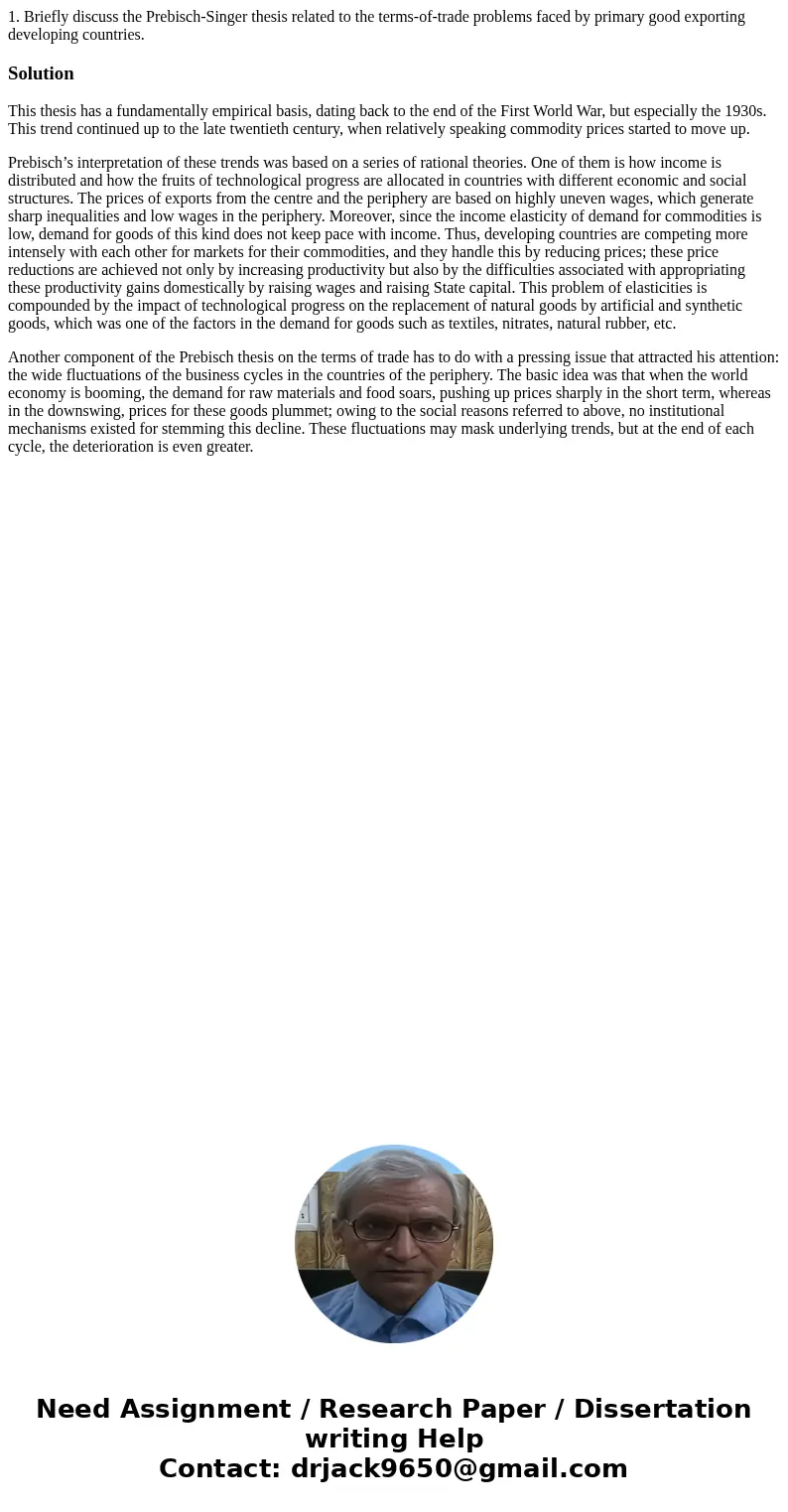1 Briefly discuss the PrebischSinger thesis related to the t
1. Briefly discuss the Prebisch-Singer thesis related to the terms-of-trade problems faced by primary good exporting developing countries.
Solution
This thesis has a fundamentally empirical basis, dating back to the end of the First World War, but especially the 1930s. This trend continued up to the late twentieth century, when relatively speaking commodity prices started to move up.
Prebisch’s interpretation of these trends was based on a series of rational theories. One of them is how income is distributed and how the fruits of technological progress are allocated in countries with different economic and social structures. The prices of exports from the centre and the periphery are based on highly uneven wages, which generate sharp inequalities and low wages in the periphery. Moreover, since the income elasticity of demand for commodities is low, demand for goods of this kind does not keep pace with income. Thus, developing countries are competing more intensely with each other for markets for their commodities, and they handle this by reducing prices; these price reductions are achieved not only by increasing productivity but also by the difficulties associated with appropriating these productivity gains domestically by raising wages and raising State capital. This problem of elasticities is compounded by the impact of technological progress on the replacement of natural goods by artificial and synthetic goods, which was one of the factors in the demand for goods such as textiles, nitrates, natural rubber, etc.
Another component of the Prebisch thesis on the terms of trade has to do with a pressing issue that attracted his attention: the wide fluctuations of the business cycles in the countries of the periphery. The basic idea was that when the world economy is booming, the demand for raw materials and food soars, pushing up prices sharply in the short term, whereas in the downswing, prices for these goods plummet; owing to the social reasons referred to above, no institutional mechanisms existed for stemming this decline. These fluctuations may mask underlying trends, but at the end of each cycle, the deterioration is even greater.

 Homework Sourse
Homework Sourse